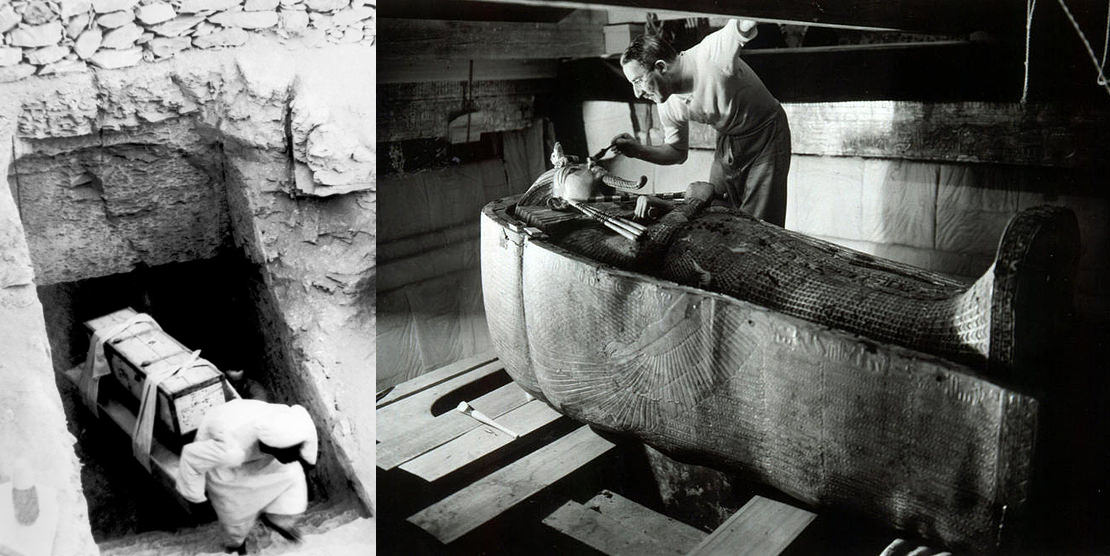
At the beginning of the 20th century, some scientists thought that the Valley of the Kings had already been completely excavated. Only Howard Carter believed that there was still a sensational discovery to be made, and the discovery of Tutankhamun's tomb was entirely due to his unwavering belief and sheer tenacity.
Howard Carter's biography as an archaeologist is remarkable. In 1891, at the young age of 17, he went to Egypt as an archaeological draftsman without any professional training, and there he forged an amazing career as an excavator. Carter became chief inspector of antiquities for upper Egypt and was highly praised for his achievements, until his career came to an abrupt end when defending Egyptian site guards in a confrontation with French tourists. The following years were extremely tough, until a fateful encounter with the wealthy nobleman, Lord Carnarvon, changed everything.
With much passion and persuasion, Carter succeeded in convincing Carnarvon that the tomb of Pharaoh Tutankhamun must still be located somewhere in the Valley of the Kings. For five long years Lord Carnarvon financed Carter's search for the lost tomb, but seemingly in vain. When Carnarvon finally refused to keep funding the venture, Carter persuaded him to grant just one last season of excavation. It worked. In November 1922, Carter made the sensational find that amazed the world: the final resting place of King Tutankhamun!
When Carter took his first look into the burial chamber of Pharaoh Tutankhamun on November 26, 1922, he was overwhelmed by the treasures he saw. Four chambers lay in front of him, some of them filled to the roof with burial artifacts of immeasurable value. They were intended to accompany the dead pharaoh on this journey into the afterlife. Jewelry, cult objects, amulets, chests, chairs, weapons, musical instruments, and royal insignias. Produced by handcraft experts and made of the most precious materials such as ebony, alabaster, precious stones - gold, and more gold. Gold necklaces, gold bracelets, gold daggers, and golden shrines. And in the midst of all this boundless splendour, the culmination: covered with wall paintings, the burial chamber itself containing the tomb of the Pharaoh and the death mask on the face of the mummy, images whose beauty and dignity surpassed anything ever seen before.